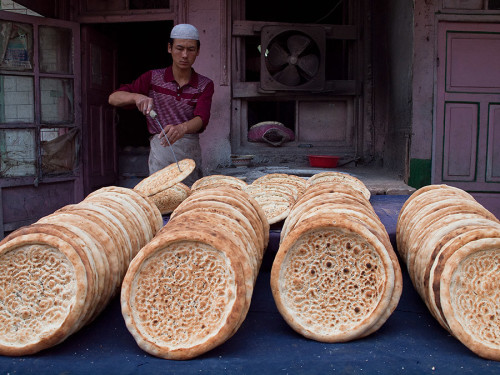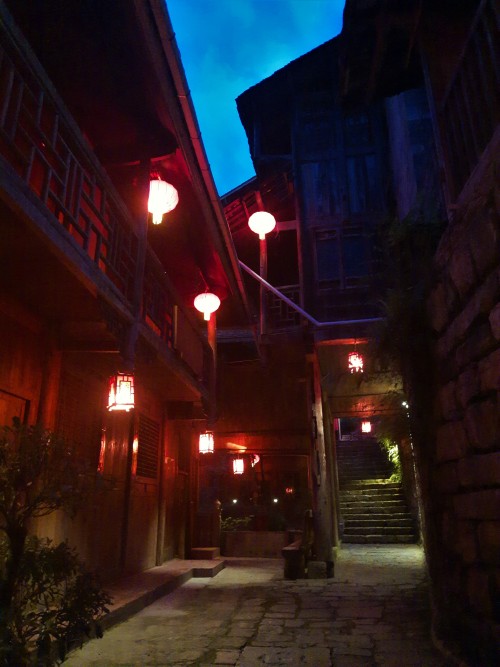Cosplay Of Daji妲己, A Famous Ancient Chinese Beauty Transformed From The Famous Chinese Yaoguai, Jiuweihu九尾狐,




cosplay of daji妲己, a famous ancient chinese beauty transformed from the famous chinese yaoguai, jiuweihu九尾狐, i.e. nine tail fox (coser is shiba chongchuan十八重川)
More Posts from China-2003 and Others

Pamiri Tajiks in Xinjiang, China





China, 2006 Beijing Zoo, Beijing, China. 中国 北京市 北京動物園 Photography by Michitaka Kurata

Uyghur bread, Xinjiang China.

Nanning, 1996 Nanning, Guangxi, China. 中国 広西 南寧市 Photography by Michitaka Kurata
[Hanfu · 漢服]Chinese Song Dynasty (960–1279 AD)Traditional Clothing Hanfu Reference to Song Dynasty Sculpture
![[Hanfu · 漢服]Chinese Song Dynasty (960–1279 AD)Traditional Clothing Hanfu Reference To Song Dynasty](https://64.media.tumblr.com/abcf8c4eb3cc070739d51a39ba41ea07/378d105590bee6cc-b2/s500x750/e0e08fd8f269dbf60b6be5d091a98d80c079d124.jpg)
![[Hanfu · 漢服]Chinese Song Dynasty (960–1279 AD)Traditional Clothing Hanfu Reference To Song Dynasty](https://64.media.tumblr.com/01e818caea031983f191e6fb03baaaa9/378d105590bee6cc-14/s500x750/3ea299e550c24fb2d12765c7faec7944c2b35b07.jpg)
![[Hanfu · 漢服]Chinese Song Dynasty (960–1279 AD)Traditional Clothing Hanfu Reference To Song Dynasty](https://64.media.tumblr.com/c97f084b77d15636b714b43238493dcc/378d105590bee6cc-a9/s500x750/a12af789f9de05bd102d174db131e9b5023b2fe2.jpg)
![[Hanfu · 漢服]Chinese Song Dynasty (960–1279 AD)Traditional Clothing Hanfu Reference To Song Dynasty](https://64.media.tumblr.com/30e31379299840c89ac1077028e44c29/378d105590bee6cc-81/s500x750/a8a89bee31a0d35c7e0dc86be9caae8017d527c4.jpg)
![[Hanfu · 漢服]Chinese Song Dynasty (960–1279 AD)Traditional Clothing Hanfu Reference To Song Dynasty](https://64.media.tumblr.com/b30ff67ee73445820f63d9a45358e390/378d105590bee6cc-5c/s500x750/128584748f4daf46b240bbb777bd9e81113c4af1.jpg)
![[Hanfu · 漢服]Chinese Song Dynasty (960–1279 AD)Traditional Clothing Hanfu Reference To Song Dynasty](https://64.media.tumblr.com/7119dfaf2e0c35d03e8d5010bd3c293d/378d105590bee6cc-e6/s500x750/6c289771a8b541ca25673b6e326efc9220772fe7.jpg)
【Historical Reference Artifacts】:
China Song Dynasty Painted Sculpture from【Jin Temple】晋祠宋代彩塑
![[Hanfu · 漢服]Chinese Song Dynasty (960–1279 AD)Traditional Clothing Hanfu Reference To Song Dynasty](https://64.media.tumblr.com/cad1a1d40d754ed40b20ef34881ccee5/378d105590bee6cc-1a/s500x750/9d6434be83412898fd1f38f895af181c8c041b2b.jpg)
▶️【About Hairstyle“包髻/Bao Ji”】: It is one of the hairstyles of ancient Han women.
包髻/Bao Ji is a hairstyles that use rectangular headscarf to cover the hair. When worn, it is folded diagonally, wrapped from the front to the back, and then wrapped around the corner of the scarf to the front of the forehead to tie a knot.
As early as the Tang Dynasty(618-907 AD), there was a prototype of this hairstyle, and it became popular in the Song Dynasty.
Women in the Ming Dynasty(1368-1644 AD) liked to use black gauze to make this hairstyle and this kind of hairstyle survived until the last dynasty of China: the Qing Dynasty.




Evening in Gongtan Ancient Town, Chongqing




chinese hanfu and traditional nuo mask by ww8090ww

China, 2000 Weizhou Island, Guangxi, China. 中国 広西 北海市 涠洲岛 Photography by Michitaka Kurata
appliance used by chinese students to do homework now are like this
-
 jjomojo liked this · 1 week ago
jjomojo liked this · 1 week ago -
 vinnphobia liked this · 3 months ago
vinnphobia liked this · 3 months ago -
 herefor-otdumb reblogged this · 3 months ago
herefor-otdumb reblogged this · 3 months ago -
 elleb3lle reblogged this · 3 months ago
elleb3lle reblogged this · 3 months ago -
 elleb3lle liked this · 3 months ago
elleb3lle liked this · 3 months ago -
 smolomega-9 liked this · 3 months ago
smolomega-9 liked this · 3 months ago -
 fancyratlady liked this · 4 months ago
fancyratlady liked this · 4 months ago -
 narrole liked this · 6 months ago
narrole liked this · 6 months ago -
 arandomrose reblogged this · 6 months ago
arandomrose reblogged this · 6 months ago -
 magicalzirai reblogged this · 6 months ago
magicalzirai reblogged this · 6 months ago -
 magicalzirai liked this · 6 months ago
magicalzirai liked this · 6 months ago -
 mmelomaniee liked this · 7 months ago
mmelomaniee liked this · 7 months ago -
 jnhkn liked this · 7 months ago
jnhkn liked this · 7 months ago -
 wildeyrie liked this · 7 months ago
wildeyrie liked this · 7 months ago -
 scribl1ta liked this · 8 months ago
scribl1ta liked this · 8 months ago -
 tamatarkha reblogged this · 8 months ago
tamatarkha reblogged this · 8 months ago -
 natynadie-011 liked this · 8 months ago
natynadie-011 liked this · 8 months ago -
 myakkoh reblogged this · 9 months ago
myakkoh reblogged this · 9 months ago -
 iamunispired liked this · 9 months ago
iamunispired liked this · 9 months ago -
 ninjahaku21art liked this · 9 months ago
ninjahaku21art liked this · 9 months ago -
 redlips-greensleeves liked this · 9 months ago
redlips-greensleeves liked this · 9 months ago -
 distressed-gizka liked this · 11 months ago
distressed-gizka liked this · 11 months ago -
 stillwithycu liked this · 11 months ago
stillwithycu liked this · 11 months ago -
 morablackbird liked this · 1 year ago
morablackbird liked this · 1 year ago -
 1234mira reblogged this · 1 year ago
1234mira reblogged this · 1 year ago -
 1234mira liked this · 1 year ago
1234mira liked this · 1 year ago -
 ostermad-blog reblogged this · 1 year ago
ostermad-blog reblogged this · 1 year ago -
 cany18 liked this · 1 year ago
cany18 liked this · 1 year ago -
 yourlocalkarcist liked this · 1 year ago
yourlocalkarcist liked this · 1 year ago -
 lenthil reblogged this · 1 year ago
lenthil reblogged this · 1 year ago -
 warmblanketsnuggles reblogged this · 1 year ago
warmblanketsnuggles reblogged this · 1 year ago -
 neutralbarracuda liked this · 1 year ago
neutralbarracuda liked this · 1 year ago -
 lunesanctis reblogged this · 1 year ago
lunesanctis reblogged this · 1 year ago -
 lunesanctis liked this · 1 year ago
lunesanctis liked this · 1 year ago -
 ariopteryx liked this · 1 year ago
ariopteryx liked this · 1 year ago -
 history-witchery reblogged this · 1 year ago
history-witchery reblogged this · 1 year ago -
 shespeakslatin liked this · 1 year ago
shespeakslatin liked this · 1 year ago -
 hoshiouji reblogged this · 1 year ago
hoshiouji reblogged this · 1 year ago -
 sweatywobblersoulland liked this · 1 year ago
sweatywobblersoulland liked this · 1 year ago -
 zaezeefrogsupreme liked this · 1 year ago
zaezeefrogsupreme liked this · 1 year ago -
 mortallyjollybear liked this · 1 year ago
mortallyjollybear liked this · 1 year ago -
 we-are-monk reblogged this · 1 year ago
we-are-monk reblogged this · 1 year ago -
 retrofailing-icor liked this · 1 year ago
retrofailing-icor liked this · 1 year ago -
 pandacatxd reblogged this · 1 year ago
pandacatxd reblogged this · 1 year ago -
 skxtears liked this · 1 year ago
skxtears liked this · 1 year ago
